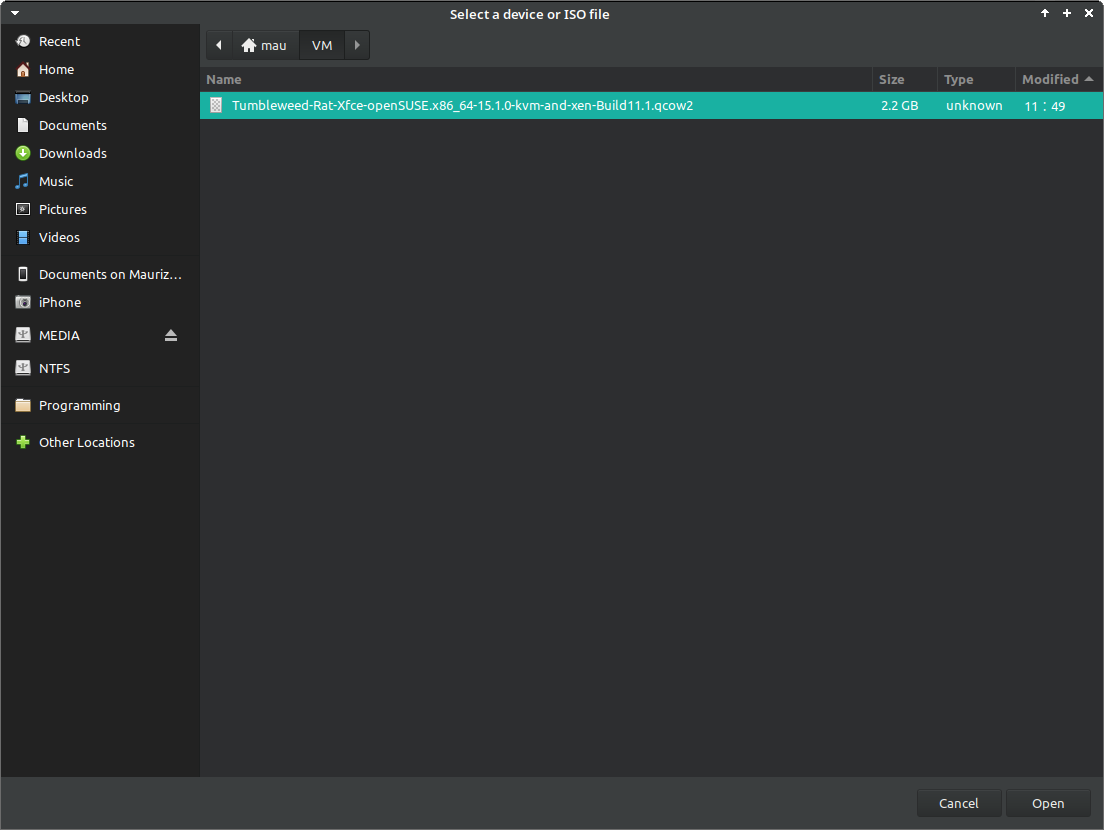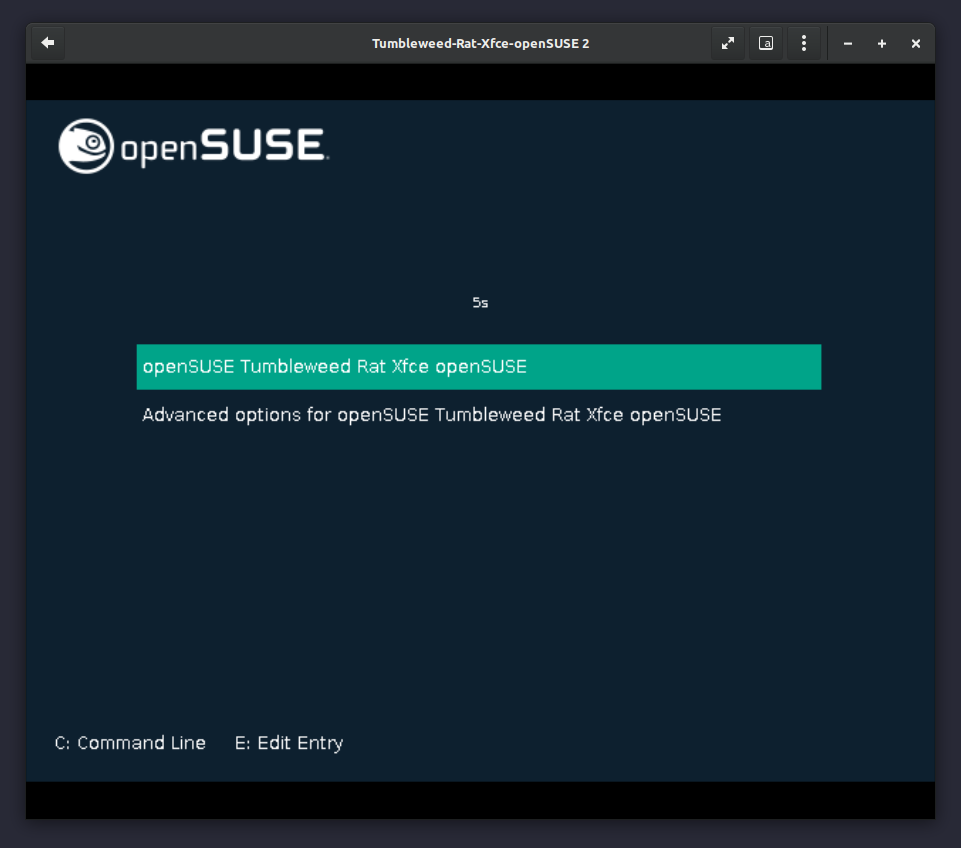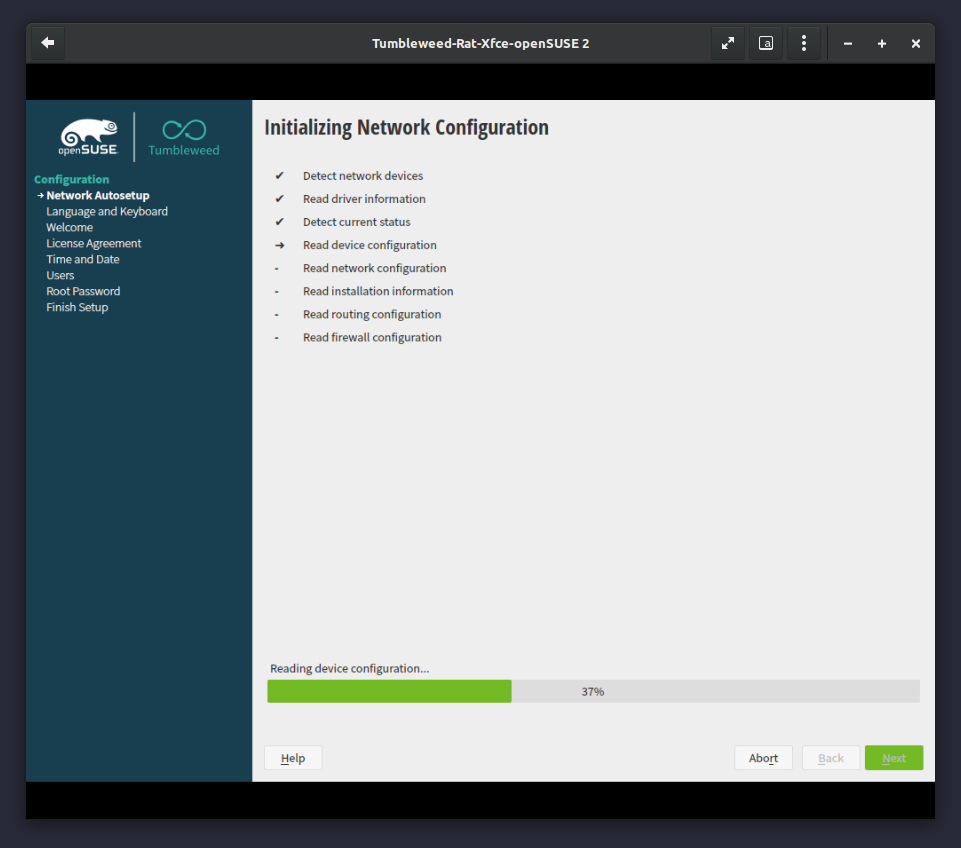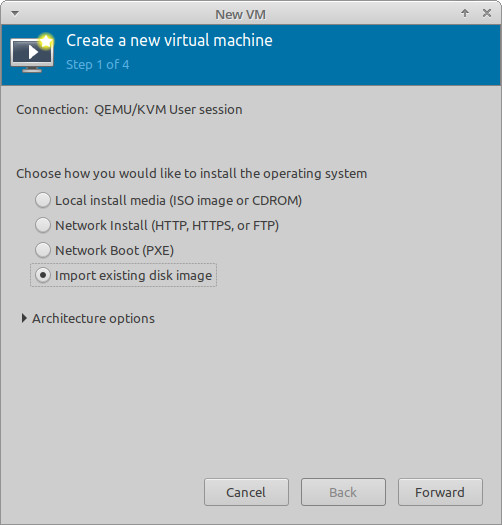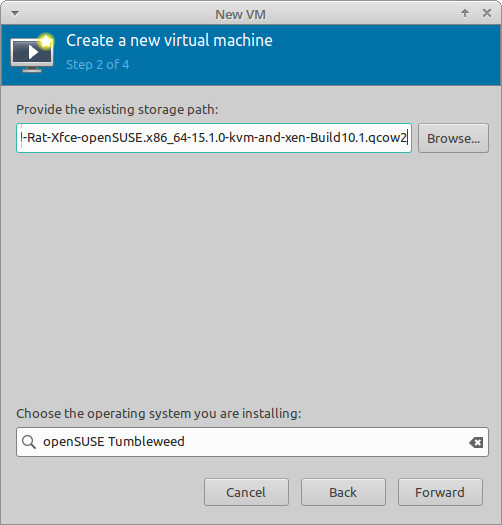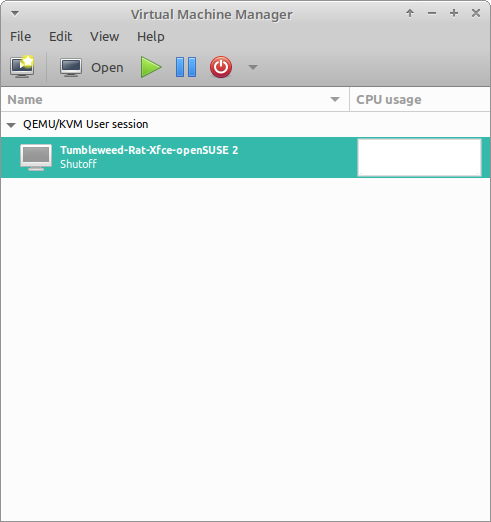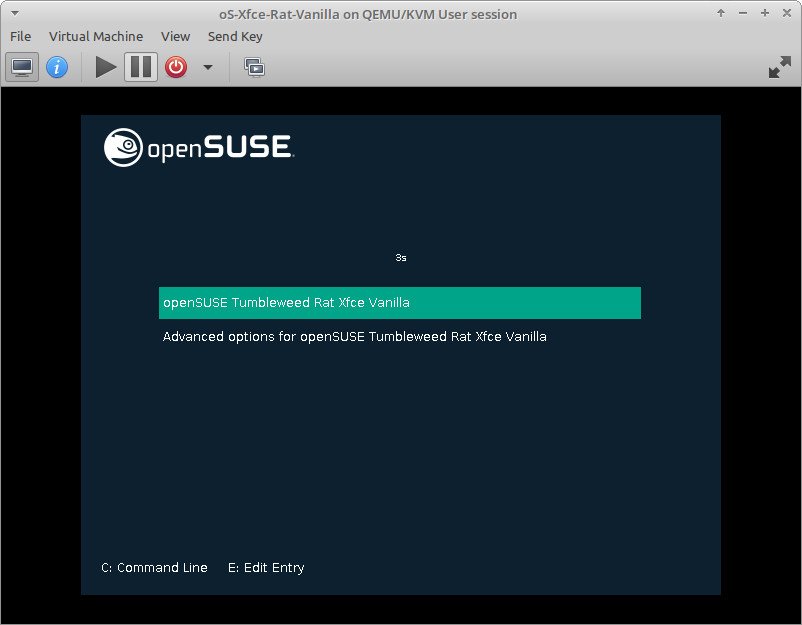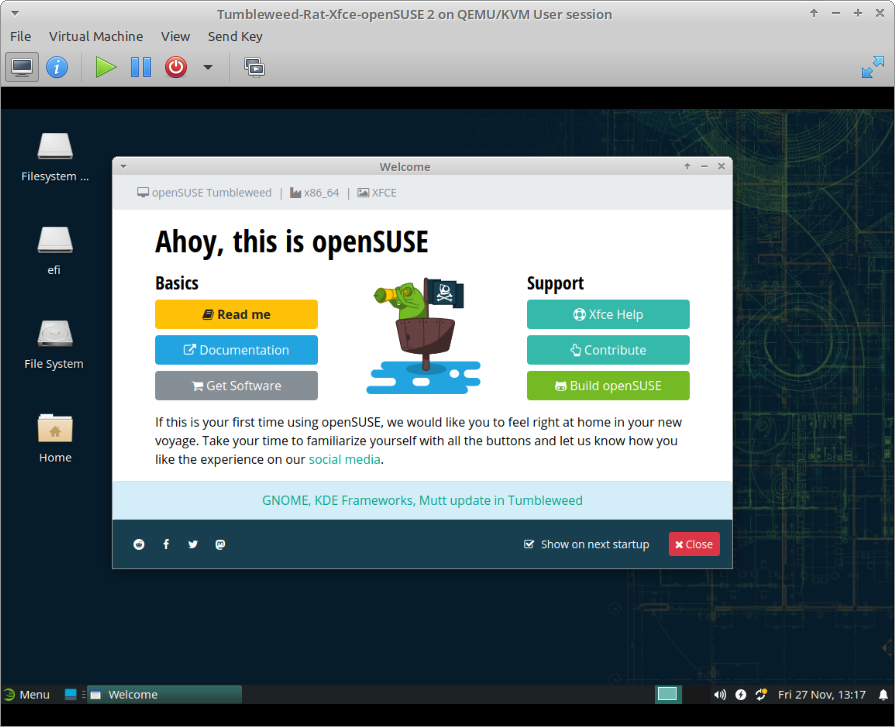Portal:Xfce/Images
Introduction
This page is meant as guide for the use of Virtual Machine images created for Xfce developers and users who wish to test and preview the latest builds of Xfce coming from GIT Master branch. The images are based on openSUSE Xfce RAT, which is our Xfce Development OBS Repository for Tumbleweed. The build process is fully automated and happens regularly giving users qcow2 disk images with Xfce's latest builds based on openSUSE's rolling release Tumbleweed.
Currently there are two sets of qcow2 images for KVM & Xen:
- The openSUSE version provides the default experience Tumbleweed and Leap users are familiar with, which includes all the openSUSE branding, look & feel and settings.
- The "vanilla" disk image ships Xfce completely unmodified from Git sources and without any openSUSE visual tweakings. This gives Xfce devs (and testers alike) who want to build and test software inside a complete Xfce environment the most convenient way to do so.
Download
Setup with GNOME Boxes (Easy)
Once downloaded, these qcow2 can be used "out of the box". The most convenient way is to import them in gnome-boxes aka Boxes, which is a simple application for managing virtual machines through QEMU, KVM and libvirt. Boxes imports and boot the images easily and focuses on getting things working out of the box with very little input from user. Read more about it on their website or install it from openSUSE's standard repositories right away.
First Boot
When these images are imported they can be launched and a "first time boot" wizard will guide you through a basic setup.
Setup with Virt-Manager (Advanced)
A more feature rich tool to load qcow2 images and in general QEMU/KVM virtual machines is virt-manager. It primarily targets KVM VMs but is also capable for Xen and LXC. Virt Manager allows you to set and control under the hood settings that are generally automated in gnome-boxes, thus gives users more control on the setup. Read more about it on their website or install it from openSUSE's standard repositories right away.
First Boot
When these images are imported they can be launched and a "first time boot" wizard will guide you through a basic setup.
Maintenance
Once inside the guest virtual machine up and running, you can maintain the setup and update it like a regular Tumbleweed system by running the following command in a terminal.
sudo zypper dup
This command will fetch all the latest packages from both the Tumbleweed distribution and OBS X11:xfce:rat repo.
Building from sources
Although Xfce components come in pre-compiled packages regularly updated, it is possible to build directly from source code. Fetching all the necessary dependencies can be easily achieved by the commands zypper source-install or zypper si followed by package name.
Example:
sudo zypper si libxfce4ui
The command above fetches all the dependencies needed to build libxfce4ui. Other commands and examples for the Zypper package manager can also be found in this cheat-sheet.
Alternatives to Boxes and virt-manager
While Boxes and virt-manager are the recommended way there are of course quite a few others like virt-install or Cockpit Web console. All of them are expected to work like any other solution supporting qcow disk images.


